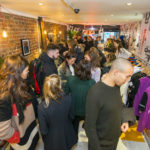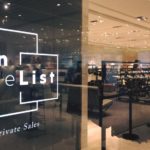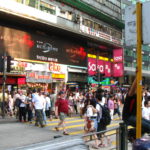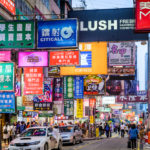Mohammed Haouache, The Storefront Ltd.’s chief executive officer, discusses the company’s pop-up shop business model and growth prospects with Bloomberg’s Ramy Inocencio and Yvonne Man on Bloomberg Daybreak: Asia.
Transcript:
*Global Marketplace for Pop-Up Stores
We are the AirBnB of retail space. We are a marketplace connecting brands and retailers to empty, vacant spaces in Paris, New York, London, and now in Hong Kong. “
You are basically the Airbnb of retail, how does this all work?
What is the process of finding a space out there?
It was the biggest challenge and also the biggest opportunity. Nobody believed that it would be possible for a marketplace to allow brands and retailers to book a retail space as easily as a hotel room. And through Storefront, it is possible. We’ve technically allowed brands to book a retail space in less than two hours.”
*Retail Sector Seeing Big Trend in Pop-Ups
You’ve merged with a French start-up, OuiOpen. Can you quantify how big of a market this can be, these pop-up stores, could they ever be as big as Airbnb?
We are hoping it will be even bigger. Why? Because basically we are disrupting the commercial real estate space. We believe the overall addressable market is around 21 billion dollars, and around 7 billion in Asia, 7 in the U.S. and 7 billion in Europe.
*Storefront has over 10,000 Listings in Hong Kong, New York, Los Angeles, San Francisco, London, Paris, and Amsterdam
You recently launched in Hong Kong in October. You manage about 4000 brands in Europe, North America as well as Asia. Who’s using it right now? Is it mostly the international brands that want to expand here in Asia? That’s why you’re targeting Hong Kong? Or are you seeing some Asian interest as well?
We’ve seen both. Given the DNA of our company, we were hoping to bring European brands and U.S. brands to Asia. But we’ve also seen a very interesting local scene of upcoming designers looking for some help to set up pop-up stores. And yes, it’s been hard for European brands to find transparency in terms of price, an easy way for them to target and find empty retail spaces through Storefront. On top of that, we are providing insurance for each booking. We’re making their lives easier.
*Offline Channels Drive 94% of Retail Sales
Retail is about the significance of having a physical pop-up store, and a brick and mortar store. When you have this surge of e-commerce, where many of these brands do just go to an Alibaba website or platform, and they can generate 17 billion dollars in sales on Singles’ Day, how can you ‘square’ that right now, when it comes to those rise in online sales?
Actually, the rise of online sales will never be perfect until they find a way to connect with their clients, users, in the offline world. And we’ve seen even Amazon, aiming to launch close to 100 pop-up stores in the next 12 months. Google also opened a pop-up store in New York. Somehow, even the ‘almighty’ online players need a physical touch.
What about in terms of the retail sector in Hong Kong, it’s been gloomy. What is your outlook on that?
We’ve seen a change of attitude in landlords. Historically, they have had some amazing years, and right now they feel that Storefront is a fantastic tool for them to either bring visibility to their vacant spaces, make money, or also just save money by finding a short term tenant. But yes, it’s been hard for us to convince them in the beginning.
- Pop Up 101: How To Design Your Pop-Up Store Layout - September 7, 2020
- 5 Reasons Why Your Brand Should Host a Holiday Pop-Up Store - December 10, 2017
- 4 Ways To Capitalize On The “Retail Crisis” in NYC - August 4, 2017





